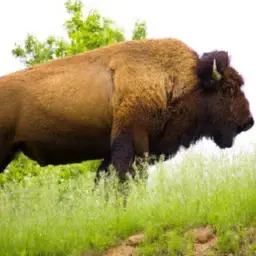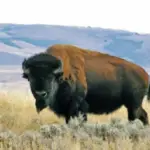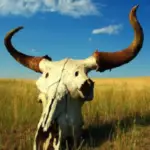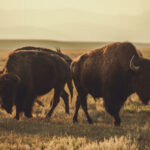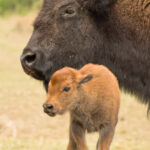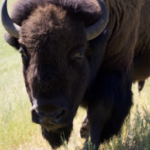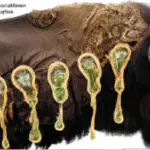Imagine exploring the vast and picturesque landscapes of Lone Elk Park, surrounded by the beauty of nature. As you wander through this breathtaking park, you can’t help but wonder about the number of bison that call this place home. Look no further, for the answer lies within “How Many Bison Are In Lone Elk Park,” a remarkable product that will unveil the secrets of this magnificent wildlife reserve. Prepare to be amazed as you discover the precise count of these majestic creatures and deepen your appreciation for the wonders of nature.
History of Bison in Lone Elk Park
Original number of bison at Park’s inauguration
When Lone Elk Park was first established, the inaugural number of bison introduced to the park was five. These majestic creatures, also known as American bison, were carefully selected to kickstart a thriving population within the park’s boundaries.
Reasons for introduction of bison in the park
The introduction of bison in Lone Elk Park served multiple purposes. Initially, it aimed to showcase the natural heritage and historical importance of these iconic animals to visitors. Additionally, bison played a vital role in environmental conservation efforts by contributing to the restoration of grasslands and fostering biodiversity in the park.
Change in bison population over the years
Over the years, the bison population in Lone Elk Park has experienced significant growth. The original five bison have multiplied, leading to a sustainable population of over a hundred individuals. This successful increase in their numbers reflects the park’s commitment to effective wildlife management practices and conservation efforts.
Bison Species in Lone Elk Park
Identifying bison species present in the park
Lone Elk Park is home to the Plains bison (Bison bison bison) species. This subspecies is the most common and widely distributed form of American bison, characterized by their robust physique, shaggy fur, and distinctive hump over their shoulders. These iconic animals possess a rich historical and cultural significance in North America.
Unique characteristics of the bison species
Plains bison in Lone Elk Park exhibit several unique characteristics. One notable feature is the pronounced shoulder hump, which is formed by robust muscle mass. The hump enables bison to exert greater force, particularly when digging through snow in search of vegetation during harsh winters. Another remarkable attribute is their ability to withstand extreme weather conditions and adapt to various ecosystems, making them well-suited to the park’s environment.
Comparison between local and global bison species
While the Plains bison population in Lone Elk Park aligns with the global bison species, there are subtle differences observed. Local Plains bison have adapted to the specific climate and habitat in the park, showcasing variations in behavior and physical traits. Despite these distinctions, they retain the essential characteristics that define bison worldwide, making them an integral part of broader conservation efforts for the species.
Factors Affecting Bison Population
Common threats to bison in Lone Elk Park
Despite the success in population growth, bison in Lone Elk Park face several threats. One prominent challenge is the risk of disease transmission, especially from domestic livestock in neighboring areas. Additionally, habitat degradation, such as reduced grassland availability, poses a threat to the bison’s food resources. Moreover, the potential for human-wildlife conflicts and vehicle collisions also contributes to the overall risks faced by the bison population.
Influence of park’s policy on bison population
The park’s policy plays a crucial role in maintaining a healthy and sustainable bison population. It focuses on preserving ample grazing areas for bison and establishing buffer zones to mitigate conflicts with human activities. Moreover, the policy emphasizes the importance of regular monitoring and disease prevention measures to protect the bison from potential threats. By implementing these measures, the park aims to safeguard the well-being and long-term viability of the bison population.
Impact of human activity on bison population
Human activity can significantly impact the bison population in Lone Elk Park. Uncontrolled tourism, including excessive noise and disturbance, can lead to stress and potential habitat displacement. Additionally, improper waste disposal practices may attract predators closer to the bison, increasing the risk of predation. Therefore, it is crucial for visitors to adhere to park regulations and maintain a respectful distance from the bison to minimize any adverse effects on their population dynamics.
Role of predators in bison population
Predators, such as coyotes and wolves, play an integral role in maintaining a balanced ecosystem within the park. They help regulate the bison population by preying on weaker or diseased individuals, which contributes to the overall health and genetic diversity of the herd. By managing predator populations responsibly and ensuring their coexistence with bison, the park fosters a natural ecological balance that supports the long-term sustainability of both species.
Methods for Counting Bison
Traditional methods for counting bison
Traditionally, bison population counts in Lone Elk Park were conducted through visual observation. Experienced park rangers would survey the park’s landscape, capturing accurate estimations of the bison population through careful scrutiny. These visual counts were typically conducted during specific seasons when the bison were more visible and gathered in specific areas.
Modern techniques used in counting bison
To supplement traditional counting methods, modern techniques have been developed using advanced technology. Drones equipped with high-resolution cameras provide an aerial perspective, allowing for efficient and accurate bison population assessments. Additionally, trail cameras strategically placed throughout the park help capture images of bison, enabling researchers to analyze and estimate the population with greater precision.
Accuracy and reliability of various counting methods
Both traditional and modern counting methods have their advantages and limitations. Visual counts conducted by experienced rangers provide an invaluable firsthand assessment but may be influenced by varying visibility conditions. On the other hand, modern techniques like aerial surveys and trail cameras offer a more objective and comprehensive approach, minimizing human error. Combining multiple counting methods allows for cross-validation, improving the accuracy and reliability of population estimates.
Current Bison Population
Latest count of bison in Lone Elk Park
As of the most recent census, the bison population in Lone Elk Park stands at approximately 150 individuals. This significant increase from the original five bison serves as a testament to the successful ongoing management strategies implemented within the park.
Comparison with past population counts
Comparing the current population count with historical data reveals a remarkable growth trend. The original introduction of five bison has led to a population that has multiplied exponentially over the years. This positive trajectory highlights the effectiveness of conservation efforts and underscores the vital role Lone Elk Park plays in the preservation of these magnificent creatures.
Projections for future bison population
Based on historical population growth and the implementation of effective management strategies, experts project a steady increase in the bison population in Lone Elk Park. However, maintaining a balance between sustainable growth and the park’s carrying capacity is essential to ensure the long-term health and viability of the bison population.
Management of Bison Population
Management strategies imposed by park management
The park employs various management strategies to ensure the well-being of the bison population. This includes the regular monitoring of herd health, implementing disease prevention protocols, and providing adequate grazing areas. Furthermore, the park enforces strict visitor guidelines to minimize human-wildlife conflicts and protect the bison from potential disturbances.
Effectiveness of current management strategies
The current management strategies have proven to be highly successful in maintaining a thriving bison population within Lone Elk Park. With meticulous planning and implementation, the park management has achieved sustainable growth while preserving the natural balance of the ecosystem. Ongoing monitoring and research contribute to the continuous improvement of management strategies, ensuring the long-term conservation of the bison population.
Proposed changes to management strategies
To further enhance the well-being of the bison population, park management is exploring additional measures. This includes increasing the size of grazing areas to accommodate the growing population, implementing educational programs to raise visitor awareness, and collaborating with neighboring landowners to minimize disease transmission risks. These proposed changes aim to strengthen the overall management approach, fostering an even healthier and more stable bison population.
Relationship between Bison and Park’s Ecosystem
Role of bison in enhancing the park’s biodiversity
Bison play a critical role in enhancing the biodiversity of Lone Elk Park. Their grazing behavior contributes to the maintenance of healthy grasslands, which, in turn, supports a rich variety of plant species. By controlling vegetation growth and stimulating new growth through trampling, bison shape the park’s landscape and create diverse habitats for other wildlife, enriching the overall ecosystem.
Bison’s effect on vegetation cover
The grazing patterns of bison impact vegetation cover in Lone Elk Park. Their selective grazing behavior can lead to variations in plant density and species composition. By consuming certain grasses and shrubs more than others, bison create a mosaic of open areas and patches of different plant communities. This dynamic vegetation structure fosters plant diversity and benefits a wide range of herbivores and birds that rely on specific plant species for food and shelter.
Impact of bison on soil quality
Bison exert a positive impact on soil quality through their grazing and trampling activities. Their movement and grazing behaviors help break up the soil surface, improving water infiltration and nutrient cycling. The trampling of vegetation leads to the deposition of organic matter, enhancing soil fertility. These soil improvements, facilitated by the bison, contribute to healthier plant growth and increased biodiversity within Lone Elk Park’s ecosystem.
Tourism and Bison Interaction
Tourist’s views on bison in the park
Visitors to Lone Elk Park often have a deep appreciation for the bison population. Many find their presence awe-inspiring, as these iconic animals serve as a symbol of the park’s natural beauty and historical significance. Tourists value the opportunity to observe bison in their natural habitat and recognize the importance of responsible tourism practices to ensure the well-being and preservation of these magnificent creatures.
The impact of tourism on bison
Tourism can have both positive and negative impacts on the bison population. While tourism generates economic support for conservation efforts, it also introduces potential disturbances that can stress the animals. Excessive noise, overcrowding, and improper approaches to wildlife viewing can disrupt the bison’s behavior and habitat. Therefore, it is crucial for visitors to exercise caution, adhere to park regulations, and maintain a safe distance to minimize any adverse effects on the bison population.
Measures to promote harmonious tourist-bison interaction
Lone Elk Park implements various measures to promote harmonious interaction between tourists and bison. These measures include establishing designated viewing areas and educating visitors on responsible wildlife viewing practices. Park officials also offer guided tours and interpretive programs to enhance visitor understanding of the bison’s natural behavior and the importance of their conservation. By fostering a sense of mutual respect and appreciation between visitors and bison, the park strives to ensure a positive experience for everyone involved.
Health Concerns and Bison Population
Common diseases affecting bison in the park
Bison in Lone Elk Park are susceptible to several common diseases, including brucellosis, bovine tuberculosis, and respiratory infections. These diseases can pose significant threats to the well-being and reproductive success of the bison population. Close monitoring of the health status and regular testing are essential to promptly detect and manage any potential outbreaks.
Threats posed by diseases to bison population
Diseases can pose severe threats to the bison population in Lone Elk Park. Outbreaks can lead to increased mortality rates and hinder overall population growth. Additionally, the introduction of diseases from external sources, such as domestic livestock or wildlife from adjacent areas, further heightens the risks. Vigilant disease prevention measures and strict protocols are crucial to safeguard the health and long-term survival of the bison population.
Measures taken to prevent and manage diseases
To prevent and manage diseases, the park implements stringent disease prevention measures. Regular testing, vaccination programs, and strict biosecurity protocols aim to minimize the risk of disease transmission within the bison population. Additionally, collaboration with neighboring landowners and wildlife officials assists in monitoring and controlling diseases in the broader ecosystem. Through these proactive efforts, Lone Elk Park prioritizes the health and conservation of its bison population.
How Many Bison Heads Are in Lone Elk Park?
The bison head weight average in Lone Elk Park is around 1000-2000 pounds for adult male bison. The park is home to a significant number of bison, but the exact count of bison heads in the park may vary depending on the season and migration patterns.
Bison Conservation Efforts in the Park
Long-term goals for bison conservation
Lone Elk Park has established long-term goals to ensure the conservation of its bison population. These goals encompass maintaining a genetically diverse and healthy population that thrives within a balanced ecosystem. Additionally, enhancing public awareness and participation in conservation initiatives, as well as collaborating with regional and national conservation organizations, are crucial for the park’s long-term conservation efforts.
Current conservation efforts and their effectiveness
The current conservation efforts in place at Lone Elk Park have been highly effective in preserving and growing the bison population. Strict management strategies, comprehensive disease prevention measures, and continuous monitoring contribute to the overall success of conservation initiatives. Ongoing research and collaboration with academic institutions and conservation experts further bolster the park’s commitment to excellence in bison conservation.
Future plans for bison conservation
Looking ahead, Lone Elk Park aims to expand its conservation efforts through various initiatives. This includes prioritizing scientific research to enhance understanding of bison ecology and promoting educational programs to increase public engagement in conservation practices. By taking proactive steps to protect and safeguard the bison population, the park envisions a future where these magnificent animals continue to thrive and contribute to the park’s ecological integrity.
In conclusion, the history of bison in Lone Elk Park reveals a remarkable journey from a modest first introduction to a flourishing population. The unique characteristics of the Plains bison in the park, coupled with effective management strategies and conservation efforts, ensure their continued existence in this remarkable ecosystem. From their impact on vegetation cover and soil quality to their role in enhancing the park’s biodiversity, bison play a vital and irreplaceable role in maintaining the ecological balance of Lone Elk Park. By fostering harmonious tourist-bison interaction, implementing robust disease prevention measures, and prioritizing long-term conservation goals, the park management is dedicated to securing a thriving future for the bison population. With each passing year, Lone Elk Park remains a testament to the successful coexistence of humans and wildlife, exemplifying the power of conservation in preserving our natural heritage.

